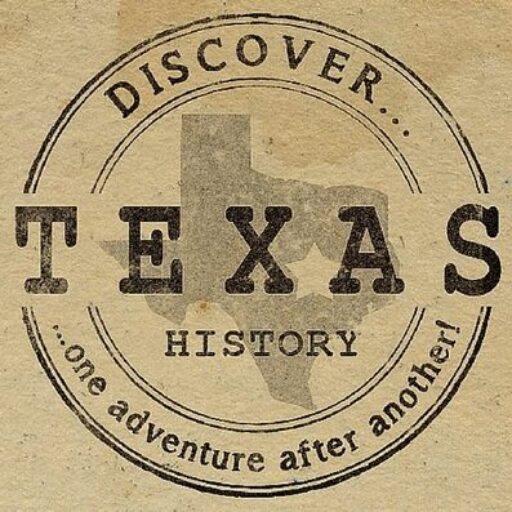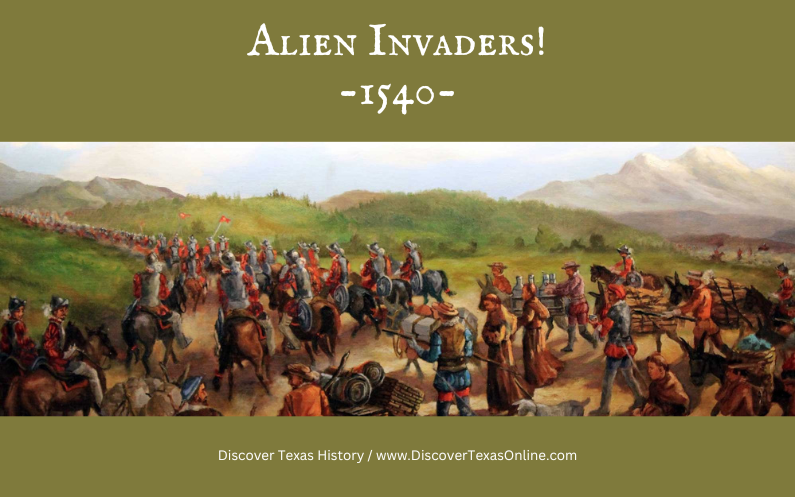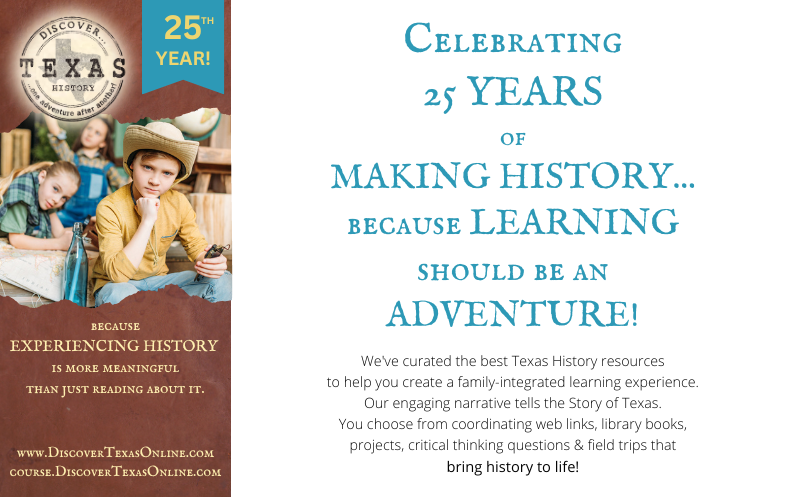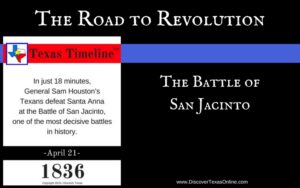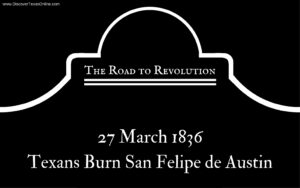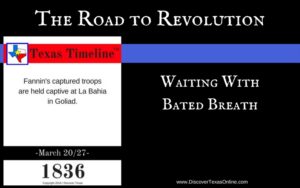It is natural to view history from our own perspective, but we can learn interesting things by putting ourselves in another position to see how things looked from another side.
Imagine, if you will, that you are a Native Texan living in the 1500s when the first Spanish explorers arrived from Spain. They must have felt as if it was an alien invasion!
The men who have entered your land wear metal breastplates and helmets that gleam in the sun. Their faces are covered with hair (uncommon among native peoples) or a chain mail buffe that covers their face, making it difficult to see their features or read their expressions. They ride large, strange beasts that you have never seen before. (Horses were unknown in the New World before the Spaniards arrived.) Astride their horses, they tower over you.
Do you feel curious? Scared? Wary? Defensive?
When they speak, their language is strange. You don’t understand.
You try to guess what they might be saying. “Who are you?”
And you answer. “Tejas–friends!” (Maybe because you hope, if you’re friendly, they won’t attack you.)
Many of the words the explorers wrote down as tribal names translate to “We are people” (as opposed to whatever it is you and that animal are) or “We are the best of men” (…so don’t try anything).
And when you learn, through a series of gestures, that they landed on the coast and ran afoul of a mean-tempered tribe there, you exclaim “Attakapa!” The Spaniards write it down as if you’ve told them the name of the tribe they encountered.
What you actually said was more like, “Oh, my goodness! Those guys are cannibals!”
🙂
It is ALWAYS helpful to view history from as many perspectives as possible! Each side had their own goals and motivations, and both were willing to die for those goals…but hoping it wouldn’t come to that.
Far too many conflicts are caused by simple miscommunications and misunderstandings.
Wouldn’t it be wonderful if we could try, first, to talk things out?
